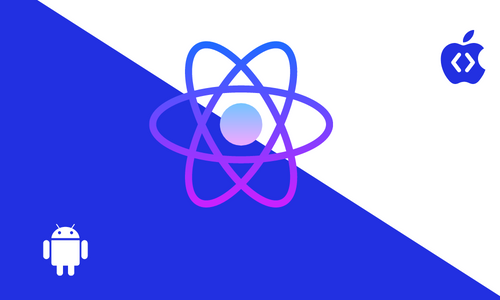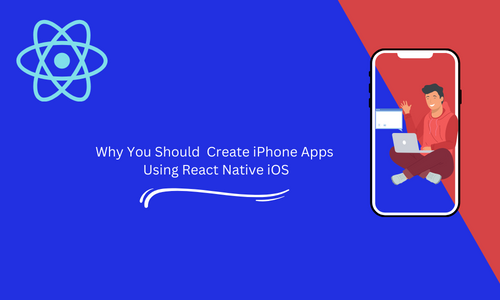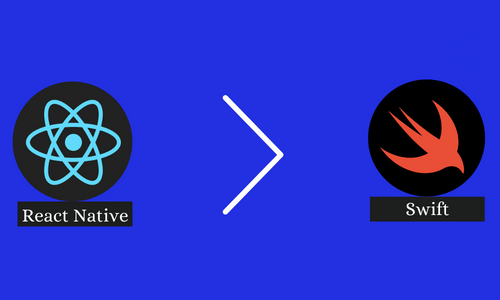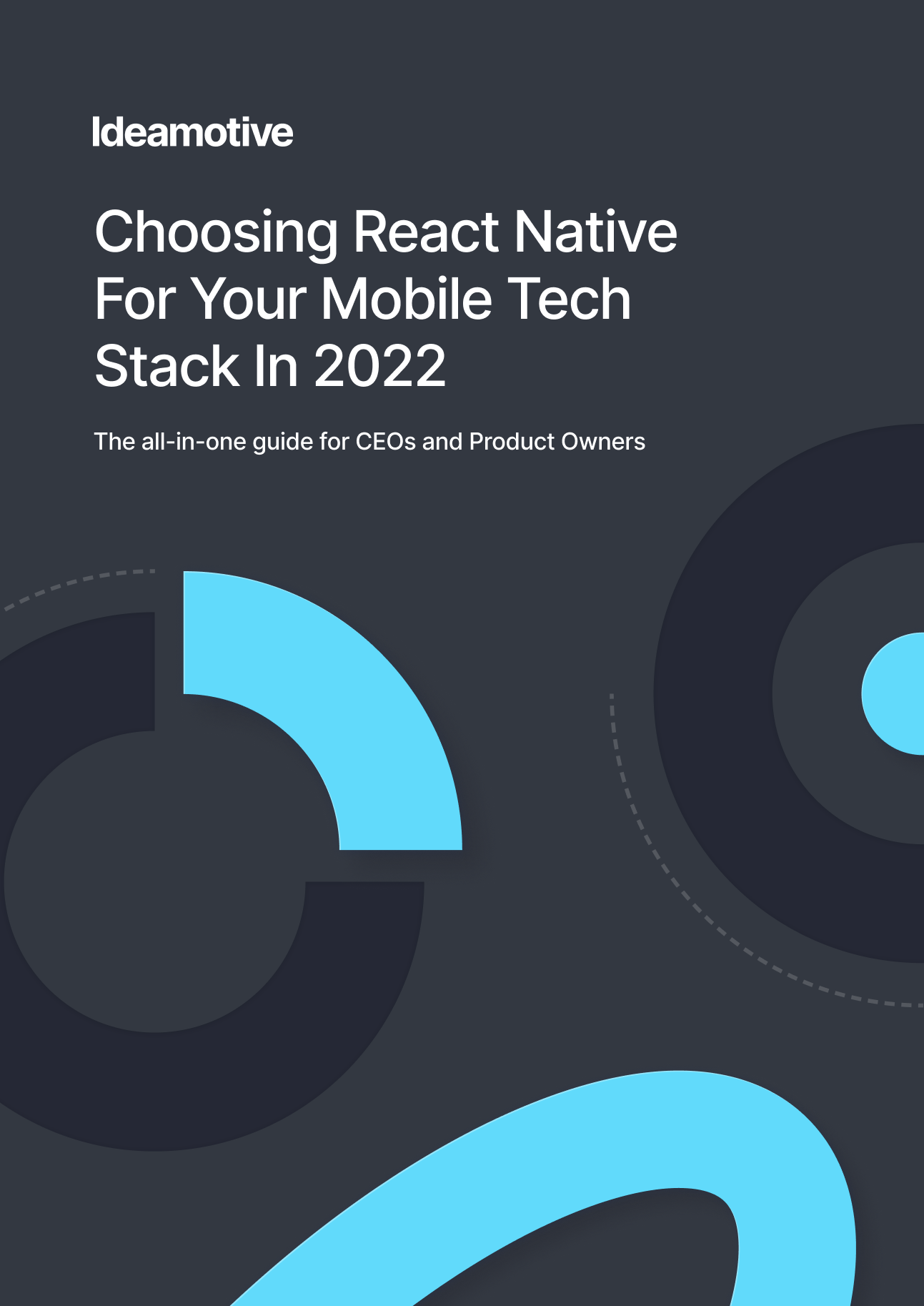If you want to develop a mobile application fast, look no further than React Native iOS. React Native is a development framework that enables developers to save time and build mobile apps more quickly. This article will provide reasons why you should consider React Native iOS.
What Is React Native?

React Native is a multi-platform mobile app development framework for Android and iOS. Facebook created this framework which gained popularity among enterprises and software developers.
React Native is flexible and enables development projects of various sizes and industry domains. It offers both classic and innovative approaches for creating hybrid mobile apps. In addition, React Native eases the production of cross-platform Android and iOS mobile apps. It allows developers to tweak it for developing web apps for Mac and Windows devices.
You might wonder about the main factors that have made React Native the favored option of businesses and developers for designing mobile apps. So, here is a list of its features.
- React: Developers may use React framework to build online and mobile JavaScript apps.
- Native: JavaScript may handle native components.
- Platform: React Native is compatible with the iOS and Android platforms.
Now that we've explored the essentials, let's look at some more sophisticated reasons you should use React Native iOS.

Why Is It Gaining More Popularity?
You might wonder what factors have made React Native popular for firms and developers to design mobile apps. As a result, we are highlighting them here.
1. Instant App Development
React Native's noteworthy features include agility, rapid app development, and excellent user experience. It gives users a more natural experience. The same code may be readily deployed on iOS and Android platforms. Thus, it may cause a shorter development cycle.
As a result, development time and expense will reduce. The adoption of React Native reduces development efforts without harming the app's quality or productivity. And it decreases the requirement for additional developers.
2. Saves Time and Cost
Developers can construct one app that can produce two in the end. This is because at least 95% of the code is cross-platform or works with Android and iOS. It saves time during app creation and reduces the money you could spend establishing individual apps.
Businesses may use React Native iOS to develop two applications simultaneously for a fraction of the cost of producing just one. Because of the reduced price of developing two applications, companies no longer have to pick which version to build.
3. Source Code Available To The Public
The open-source framework is a collection of ready-made resources for software developers to create webpages, user interfaces, and basic applications. Because it is an open-source framework, anyone may use it to develop apps for free.
4. Development Mobile App From A Current Web Project
iOS development with React Native enables using a single code base across all devices. Developers may use React Native's capabilities to build a flexible and intuitive mobile app. Besides, they may create it from an existing web project using the same backend code.
Also, this makes it easier for novice developers to grasp the framework. It increases the team's flexibility, making building web app upgrades easier. As such, React Native saves developers time when creating a mobile app from an existing web project.
5. Excellent Performance
React Native apps are similar to native apps developed on Android or iOS platforms. Plus, they are fast since the programming language is for mobile devices. React Native apps use the graphics processing unit rather than the central processing unit (CPU) (GPU). Consequently, they are substantially quicker than cross-platform hybrid technology.
6. Facebook Support
In 2015, it was found that Facebook supports React Native with finances. With Facebook's support, React Native's reliability increased at a stretch. One of the most excellent features of React Native is its ability to achieve this.
In addition, React Native has attracted the support of many firms because most prominent players in the IT sector use it. In fact, React Native iOS is now a global choice, thanks to Facebook support.
7. A Promising Future
Businesses of all sizes and industries have used React Native for their mobile app development needs. Some top applications that use React Native are Facebook Ads Manager, Instagram, Bloomberg, Gyroscope, Airbnb, Tesla, Walmart, Tencent QQ, and Baidu Mobile.
Furthermore, React Native has evolved into the preferred option for Mobile App Development Companies worldwide. It is because of its capacity to save app developers time and energy. The huge developer community is always striving to enhance and strengthen the framework.
All these arguments demonstrate that React Native is here to stay and flourish. It will undoubtedly have a great future in the following decades.
Some Of The Current iOS Development Problems
iOS developers encounter several problems while developing an iOS app. These may include eligibility, rejection, device compatibility, and so forth.
1. Eligibility
If you wish to publish your software on the App Store, you must be 18 years old and pay a membership fee of 99 USD annually. This can be a significant challenge for novice developers just starting iOS programming or someone experimenting with a concept. Furthermore, the age limitation might be a barrier for young developers who are competent but do not fulfill the age requirements.
2. High Expectations of UI/UX
iOS has evolved as the user's preferred platform because of its high-quality UX and clean design. Engineers must keep end-user needs and practicality in mind while developing an iOS app. They must guarantee that the UI has only the features for the functionality to be understood.
Also, developers should consider modern designs while creating UI/UX for an application to create an innovative and intuitive interface. Because Apple has always given its consumers high-quality products, developers must maintain the quality of their apps, or users will not gain satisfaction.
3. Compatibility
Apple has different iPhone models. And each has essential hardware and software improvements. Developers must learn about new functionality in new versions and update their apps accordingly. Else, the app will not operate on the most recent iPhone.
Additionally, Apple routinely releases hardware and software innovations while adhering to strict security and control standards. iOS Development firms and programmers must work in accordance with these improvements to reduce the issues experienced throughout the application development process.
Keeping abreast with the iOS development issues helps developers garner insights into the difficulties they may experience and a head start on the obstacles they may face during the development process. Also, developers must do periodic upgrades and regularly try to give excellent solutions to end customers. Constant testing and improving expertise will enable developers to overcome any upcoming challenges.
Comparisons between React Native Better and Swift
Let's compare React Native vs. Swift app development based on the criteria below:
1. Testing
React Native iOS provides several app testing techniques spanning various test levels. You may start using ReactTestUtils and work up to unit testing with Jest or Jasmine. Jest immediately installs when you run React Native app on iOS. You may use either RNtester or Mocha for integration testing.
Besides, React Native accepts all standard test automation packages, so you can use XCTest to run React Native app on iOS. Apple's testing framework enables you to execute unit tests, performance analyses, and user interface tests. Also, you may utilize Keep It Functional (KIF), the iOS functional testing framework. And you can use Appium and Robot Framework for test automation.
On the other hand, to conduct UI tests in a Swift app, you may use Xcode's XCTest framework. You develop test cases using XCTest by simply capturing your experiences with the app. The tool converts your inputs into code. However, it is not always accurate.
Also, Appium, Jest, Jasmine, and others can be used besides XCTest.
2. Third-party Libraries And APIs
The React Native community is continually expanding, as is the amount of third-party libraries. These modules might help you create several tiers of the app. Consider communication with native components. Modern versions of React Native use Yarn as package management, making installing and handling dependencies simple.
Furthermore, beginning with React Native 0.60, the framework links third-party libraries that use native code automatically. In most circumstances, you won't have to link libraries in Xcode or execute any additional instructions manually.
Many iOS open-source frameworks and APIs like React Native support Swift. And Swift handles third-party library administration and upkeep with ease. Just include Carthage and CocoaPods in your iOS development with React Native tools.
3. Developing Enterprise Apps
Since JavaScript is an untyped programming language, creating an extensive corporate application with React Native is difficult. Your app may reach a point where the lack of type safety makes scaling problematic. And you may also encounter issues while reworking an enterprise React Native app on iOS.
Consider the case of renaming props. You could fix the problems by including TypeScript in the project. However, this would need more time and effort by competent software developers.
On the other hand, Swift has a more concise syntax and is best suited to enterprise-level programs. In simple terms, Swift needs less code and is simpler to maintain, which is especially crucial for large apps.
Swift also has memory management, optional types, a protocol-oriented design, and an error-handling system. All these are important for constructing corporate applications.
4. Over-The-Air (OTA) Updates
You're already aware that Apple does not permit OTA app updates. If you use React Native, you may still make essential modifications. And could update your app without submitting it to the App Store. Combine it with CodePush, a mechanism for updating JavaScript code. You may also use Electrode. But be cautious: don't change the app's function with your OTA.
On the other hand, a Swift app cannot get OTA updates. You must create a new app version and upload it to the App Store.
5. CI/CD Support
React Native does not provide an out-of-the-box solution for CI/CD. You have to use third-party solutions if you wish to automate distribution. To create your React Native delivery pipeline, you may use Bitrise, Fastlane, NeverCode, and CircleCI.
You can use the following tools to create a CI/CD pipeline for a Swift app: Bitrise, Buddybuild, TravisCI, and CircleCI. Fastlane's Swift configuration is still in beta. Furthermore, NeverCode has restricted functionalities for Swift apps.
6. UI
Using the JavaScript bridge, React Native produces native iOS components, bringing React Native apps' UI closer to that of native apps. Above and beyond that, the framework contains a plethora of ready-made features. However, in rare situations, they may act unexpectedly. Hence, React Native cannot match Swift in terms of the user interface.
Naturally, iOS platform integration with a Swift app is intuitive. Swift also makes it easier to create eye-catching UI for native apps than React Native. And it has now gotten much easier to do so. Apple presented SwiftUI, a new Swift framework, during WWDC 19. This tool enables you to create the app's user interface declaratively.
7. App Maintenance
React Native iOS may have issues with code upgrades and compatibility with third-party libraries. So when a new framework release is available, you need to ensure that the latest version of React Native is compatible with the version of each library in your project.
Swift is simpler to maintain than JavaScript since it is a statically-typed language. Beyond that, developers may depend on XCode, which simplifies error monitoring while developing a Swift mobile app. Swift is a remarkable language: it needs less code for the same operations as Objective-C. Therefore, app maintenance is never an issue with Swift.
Why Is React Native Better Than Swift?

Overall, React Native and Swift are both excellent technologies for developing iOS applications. To determine that React Native is best for your project, it must meet all the criteria for your app.
React Native allows you to create iOS, web, and Android using a single code base. It is a less expensive technology than Swift. But it enables the creation of high-quality apps. However, the biggest issue of React Native iOS is its immaturity. Frequent framework modifications and a lack of documentation might lead to problems.
The good news is that React Native was designed for iOS development, so your app is less likely to have major bugs. On the flip side, Swift is a simple programming language. Therefore, it is more suitable for large business projects than React Native.
Furthermore, Swift is quicker than React Native for developing iOS apps. Still, if you want to create a native Android app, you'll spend more time and money.
Will React Native Rule The World Of iOS?
Cross-platform iOS development with React Native is becoming increasingly popular among mobile app and web designers. And there are many frameworks to choose from, each with its benefits and drawbacks. There are numerous points to consider when determining "the best." However, React Native is unquestionably among the top two.
It is rapid, stable, reliable, simple to learn, and constantly improving. Meta continuously upgrades the framework to keep it at the forefront of cross-platform development. It has the support of the entire JavaScript community, with an army of developers working to improve it. When top brands like Skype, Instagram, Airbnb, Bloomberg, and Uber use it for their apps, you know there has to be a reason.
There are other options for mobile app and online developers. But none of them stand out for obvious reasons. Though Flutter is the main competition, it will not kill or eliminate React Native. Meta is not a slouch, and they have big ideas for expanding this framework. And with the force of Meta on your side, React Native will be the unshakeable ruler of iOS in years to come.
Conclusion
React Native iOS has proven itself as a front-runner in the mobile app development sector, as it should in a few years after its first launch. React Native is a helpful framework for software developers. Also, it is a promising technology for commercial businesses and a user-friendly solution. As a result, if you want to build an iPhone app that works across several platforms, consider using React Native.












